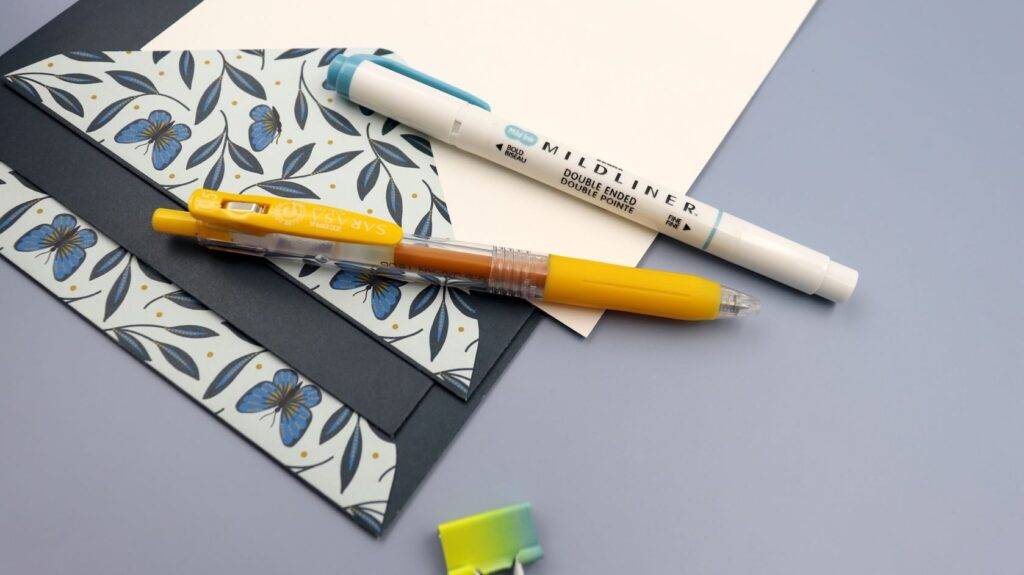Stationery Secrets: Tools for Effective Note-Taking and Organization

In both academic and professional settings, having a solid system for note-taking and organization can make a world of difference. The right tools can help you work more efficiently, retain information better, and stay organized. This ZEBRA guide will provide simple tips on how to use various stationery tools to enhance your note-taking skills and improve your overall organization.
Contents
The Importance of Effective Note-Taking
Taking good notes is more than just writing down what you hear or read. Effective note-taking helps you understand and remember information. When you write something in your own words, you process the information, making it easier to remember. This practice helps you break down complex ideas into smaller, more manageable parts.
Good notes also help you structure ideas clearly. With well-organized notes, you can see how different concepts connect, which can make it easier to understand challenging subjects. This can be especially helpful when preparing for exams or writing reports. Without a clear system for taking notes, it is easy to get lost in disorganized thoughts, making studying or reviewing much harder.
Struggling with disorganized notes can lead to confusion. If your notes are hard to follow, you may miss important details, or you might spend too much time searching for information. Also, messy handwriting or inconsistent formatting can make it difficult to understand your notes later on, which will slow down your study process and make your work less effective.

Essential Stationery Tools for Note-Taking
Having the right stationery tools makes a big difference in the quality of your notes. Below are some key tools that can help you take better notes and stay organized.
Notebooks and Paper
The type of notebook you choose depends on your personal preferences and needs. Spiral-bound notebooks are flexible and can easily fold back on themselves, making them great for small spaces. Hardcover notebooks, on the other hand, offer more durability, making them suitable for long-term projects.
For different kinds of notes, different paper styles may be useful. Grid paper is great for drawing diagrams, while lined paper is traditional for text-based notes. Bullet journals are perfect for those who want a more customizable note-taking experience. With a bullet journal, you can create your own layout and include symbols to track tasks and ideas.
Writing Instruments
The right stationery, like the Sarasa Clip by ZEBRA can make note-taking smoother and more enjoyable. Ballpoint pens are reliable for everyday writing because they dry quickly and do not smudge easily. Gel pens, with their vibrant colors and smooth flow, are a good option if you want a little more style in your notes. For those who enjoy a classic writing experience, fountain pens are a great choice, though they require a bit more care.
Highlighters are also essential stationery tools, especially if you like to emphasize key points or color-code your notes. Markers can be used for headings or labeling, while different tip sizes allow for more creative freedom.
Organizational Tools
Keeping your notes organized is essential for effective studying or working. Binders help you manage large amounts of paper, making it easy to rearrange or add new pages. Folders are useful for keeping loose papers together and protecting important documents.
Dividers and tabs are other excellent tools for organization. Use dividers in your binder to separate subjects or topics, and use tabs in notebooks to quickly find key sections.
Strategies for Maximizing Productivity with Stationery
Along with using the right stationery supplies, it’s important to have strategies in place for organizing your notes. Different note-taking methods can suit different learning styles, so experiment with a few to find what works best for you.
One popular method is the Cornell method. This involves dividing your page into three sections: notes, cues, and a summary. The notes section is for writing down information during class or reading, the cues section is for key terms or questions, and the summary section helps you review the material later.
Mind mapping is another useful technique for visual learners. It allows you to see how ideas are connected through diagrams and shapes. Outlining is a more traditional approach that involves organizing information in a hierarchical format, which helps break down complex topics into smaller parts.
Effective Note-taking
By choosing the right stationery tools and applying effective strategies, you can improve your note-taking and organization skills. Whether you’re taking notes for school, work, or personal projects, having a system in place helps you stay focused and productive, and ZEBRA can help you with the right stationery tools.





